1929 Rolls-Royce Phantom I Newmarket Tourer Coachwork by Brewster Registration no. to be advised Chassis no. S253KR *Owned by only two families from new *One of approximately 67 Phantom Is with Newmarket tourer coachwork *New cylinder head *Extensively refurbished Fußnoten Rolls-Royce's 'single model' policy had proved an outstanding success for the company, but immediately after the end of The Great War the recession in the motor trade prompted the introduction of a smaller, cheaper 20hp car to be built alongside the existing 40/50hp Silver Ghost. Henry Royce's new design incorporated a number of modern features such as overhead valve-gear for its six-cylinder engine, a centre-change gearbox and 'Hotchkiss drive' rear axle, and the advanced newcomer's arrival only served to emphasise the Silver Ghost's Edwardian origins. However, the 45/50hp model would soon benefit from developments pioneered on its smaller sibling. Introduced by Rolls-Royce in 1925 to replace the Silver Ghost, the New Phantom (retrospectively known as the Phantom I) boasted an entirely new overhead-valve six-cylinder engine displacing 7,668cc and, like the contemporary 20hp model, adopted a disc-type clutch and adjustable radiator shutters. Its chassis though, remained essentially the same as that of the later, four-wheel-braked Silver Ghost and would continue fundamentally unchanged until the arrival of the Phantom II in 1929 brought with it an entirely new frame. Like its 'Ghost predecessor, the New Phantom was also produced by Rolls-Royce of America Incorporated, a subsidiary set up in December 1919 when the parent company purchased the American Wire Wheel Company's plant in Springfield, Massachusetts. Springfield commenced manufacture of the New Phantom in 1926 and by the second half of 1929 production had risen to 12 cars per week. This would prove to be the high point of Rolls-Royce of America's fortunes, the October '29 Wall Street Crash and the introduction of the Phantom II - re-tooling for which the US company could not afford - signalling the beginning of its decline. The Phantom I was in production for only five years and the Derby-built models ran parallel with the Springfield cars but ended in 1929, whereas the Americans continued until 1931. Unlike its British-built counterpart, the American product could be ordered with 'factory' bodywork, usually by Brewster, the latter company having been taken over by Rolls-Royce in December 1925. As well as manufacturing coachwork of the highest quality, Brewster had built its own automobiles from 1915 up to the time of its acquisition by Rolls-Royce, re-emerging as an auto-maker in its own right, using Ford chassis, when US Phantom production finally ceased in 1934 and the company became part of the reconstituted Springfield Manufacturing Corporation. One of approximately 67 bodied by Brewster with Newmarket tourer coachwork, this American-built, left-hand drive Rolls-Royce Phantom I was sold new to Kenneth Guiterman from Lawrence, Long Island, NY, who had owned two other Springfield-built Rolls-Royces, chassis numbers '319LF' and 'S181RP'. It was sold to a relative of the present owner's family in 1947 and thus been owned by only two families from new. This car is unusual in that records show it to have had this particular body (number '5614') from new, whereas many Newmarket bodies were fitted as replacements. The same style was chosen by Henry Goldman of Goldman Sachs, and Tommy Manville (owner of 14 Rolls-Royces) among many other notable owners. The vendor advises us that the car is structurally sound and runs well, a new cylinder head having been fitted recently. The car also benefits from a bare-metal re-spray and a new leather interior with an apporopriate and fitting Vintage-era look. It also features a new period external trunk, new mohair roof, special spotlight, side-mounted spare wheel, correct twin-bladed bumpers, cone headlamps, a full set of instruments, and original running boards. Excep
1929 Rolls-Royce Phantom I Newmarket Tourer Coachwork by Brewster Registration no. to be advised Chassis no. S253KR *Owned by only two families from new *One of approximately 67 Phantom Is with Newmarket tourer coachwork *New cylinder head *Extensively refurbished Fußnoten Rolls-Royce's 'single model' policy had proved an outstanding success for the company, but immediately after the end of The Great War the recession in the motor trade prompted the introduction of a smaller, cheaper 20hp car to be built alongside the existing 40/50hp Silver Ghost. Henry Royce's new design incorporated a number of modern features such as overhead valve-gear for its six-cylinder engine, a centre-change gearbox and 'Hotchkiss drive' rear axle, and the advanced newcomer's arrival only served to emphasise the Silver Ghost's Edwardian origins. However, the 45/50hp model would soon benefit from developments pioneered on its smaller sibling. Introduced by Rolls-Royce in 1925 to replace the Silver Ghost, the New Phantom (retrospectively known as the Phantom I) boasted an entirely new overhead-valve six-cylinder engine displacing 7,668cc and, like the contemporary 20hp model, adopted a disc-type clutch and adjustable radiator shutters. Its chassis though, remained essentially the same as that of the later, four-wheel-braked Silver Ghost and would continue fundamentally unchanged until the arrival of the Phantom II in 1929 brought with it an entirely new frame. Like its 'Ghost predecessor, the New Phantom was also produced by Rolls-Royce of America Incorporated, a subsidiary set up in December 1919 when the parent company purchased the American Wire Wheel Company's plant in Springfield, Massachusetts. Springfield commenced manufacture of the New Phantom in 1926 and by the second half of 1929 production had risen to 12 cars per week. This would prove to be the high point of Rolls-Royce of America's fortunes, the October '29 Wall Street Crash and the introduction of the Phantom II - re-tooling for which the US company could not afford - signalling the beginning of its decline. The Phantom I was in production for only five years and the Derby-built models ran parallel with the Springfield cars but ended in 1929, whereas the Americans continued until 1931. Unlike its British-built counterpart, the American product could be ordered with 'factory' bodywork, usually by Brewster, the latter company having been taken over by Rolls-Royce in December 1925. As well as manufacturing coachwork of the highest quality, Brewster had built its own automobiles from 1915 up to the time of its acquisition by Rolls-Royce, re-emerging as an auto-maker in its own right, using Ford chassis, when US Phantom production finally ceased in 1934 and the company became part of the reconstituted Springfield Manufacturing Corporation. One of approximately 67 bodied by Brewster with Newmarket tourer coachwork, this American-built, left-hand drive Rolls-Royce Phantom I was sold new to Kenneth Guiterman from Lawrence, Long Island, NY, who had owned two other Springfield-built Rolls-Royces, chassis numbers '319LF' and 'S181RP'. It was sold to a relative of the present owner's family in 1947 and thus been owned by only two families from new. This car is unusual in that records show it to have had this particular body (number '5614') from new, whereas many Newmarket bodies were fitted as replacements. The same style was chosen by Henry Goldman of Goldman Sachs, and Tommy Manville (owner of 14 Rolls-Royces) among many other notable owners. The vendor advises us that the car is structurally sound and runs well, a new cylinder head having been fitted recently. The car also benefits from a bare-metal re-spray and a new leather interior with an apporopriate and fitting Vintage-era look. It also features a new period external trunk, new mohair roof, special spotlight, side-mounted spare wheel, correct twin-bladed bumpers, cone headlamps, a full set of instruments, and original running boards. Excep



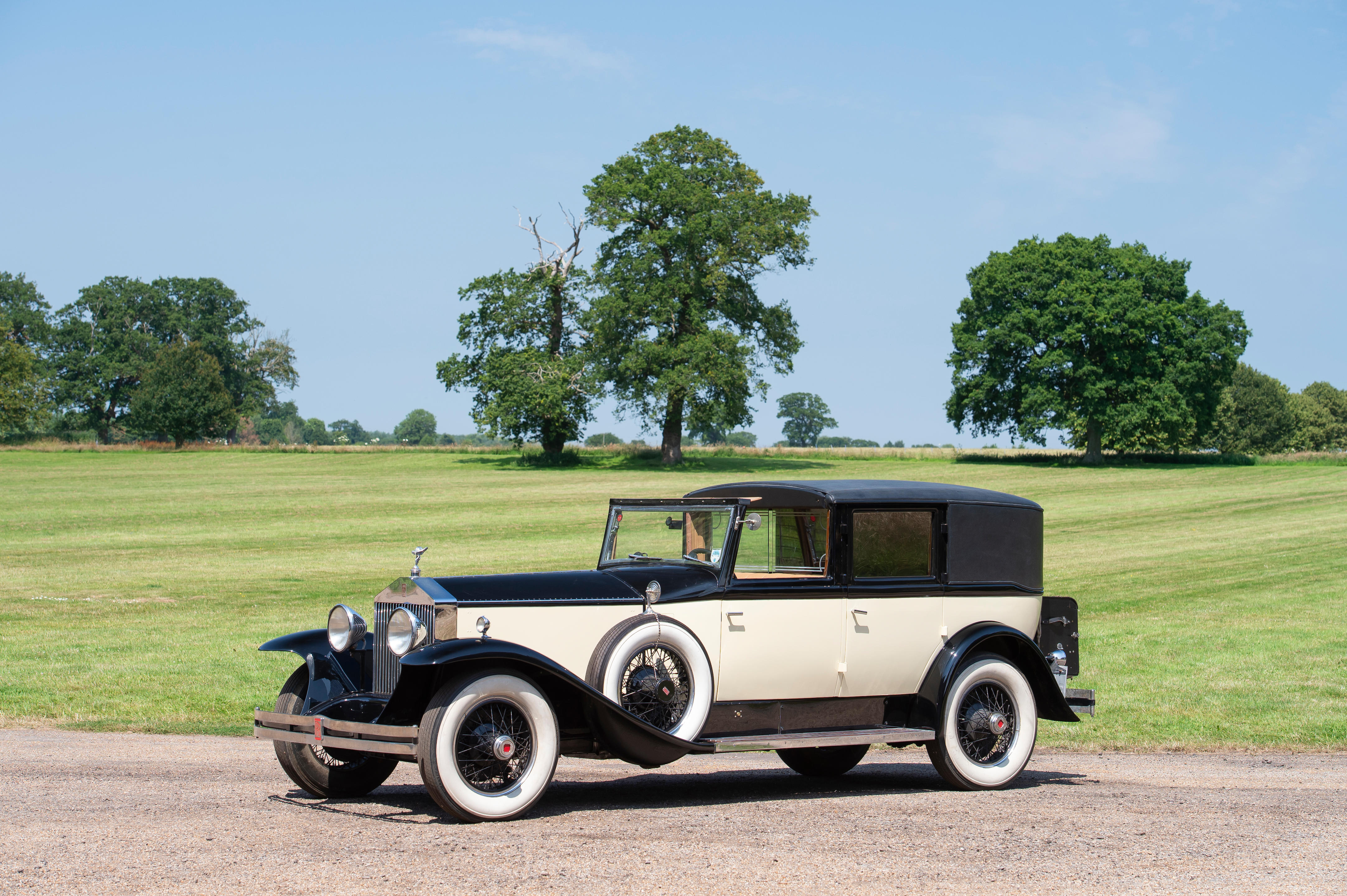
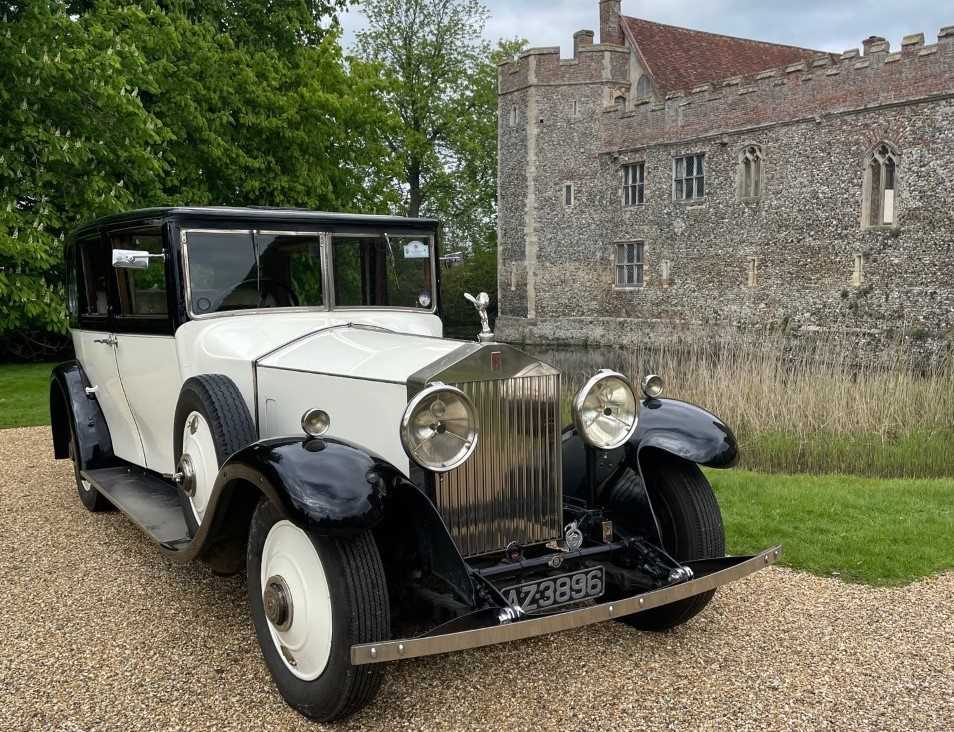


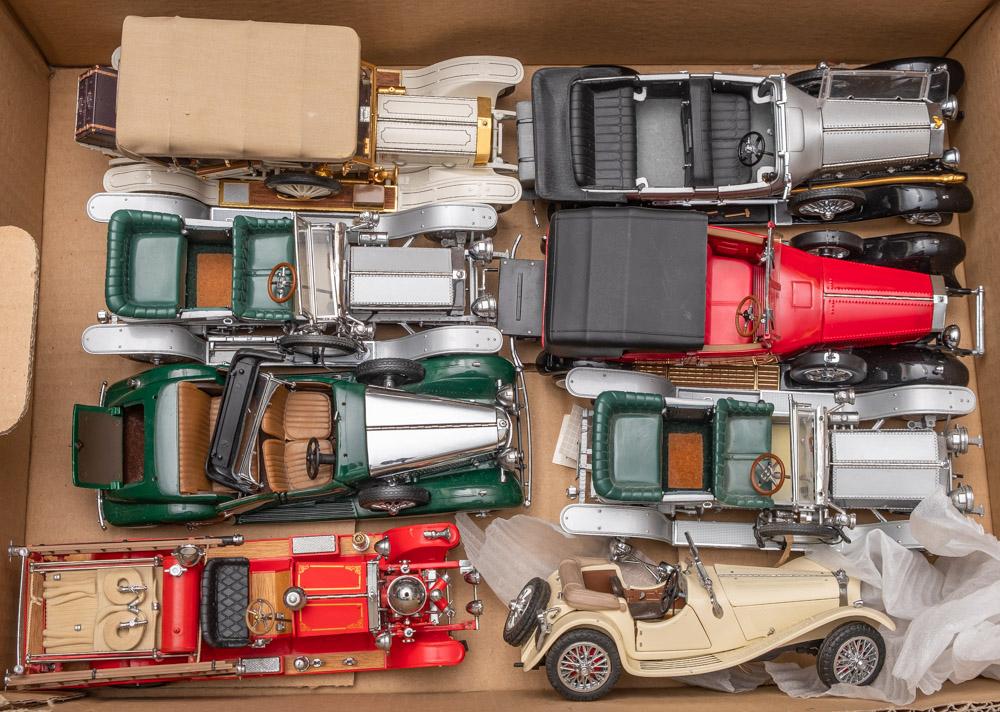

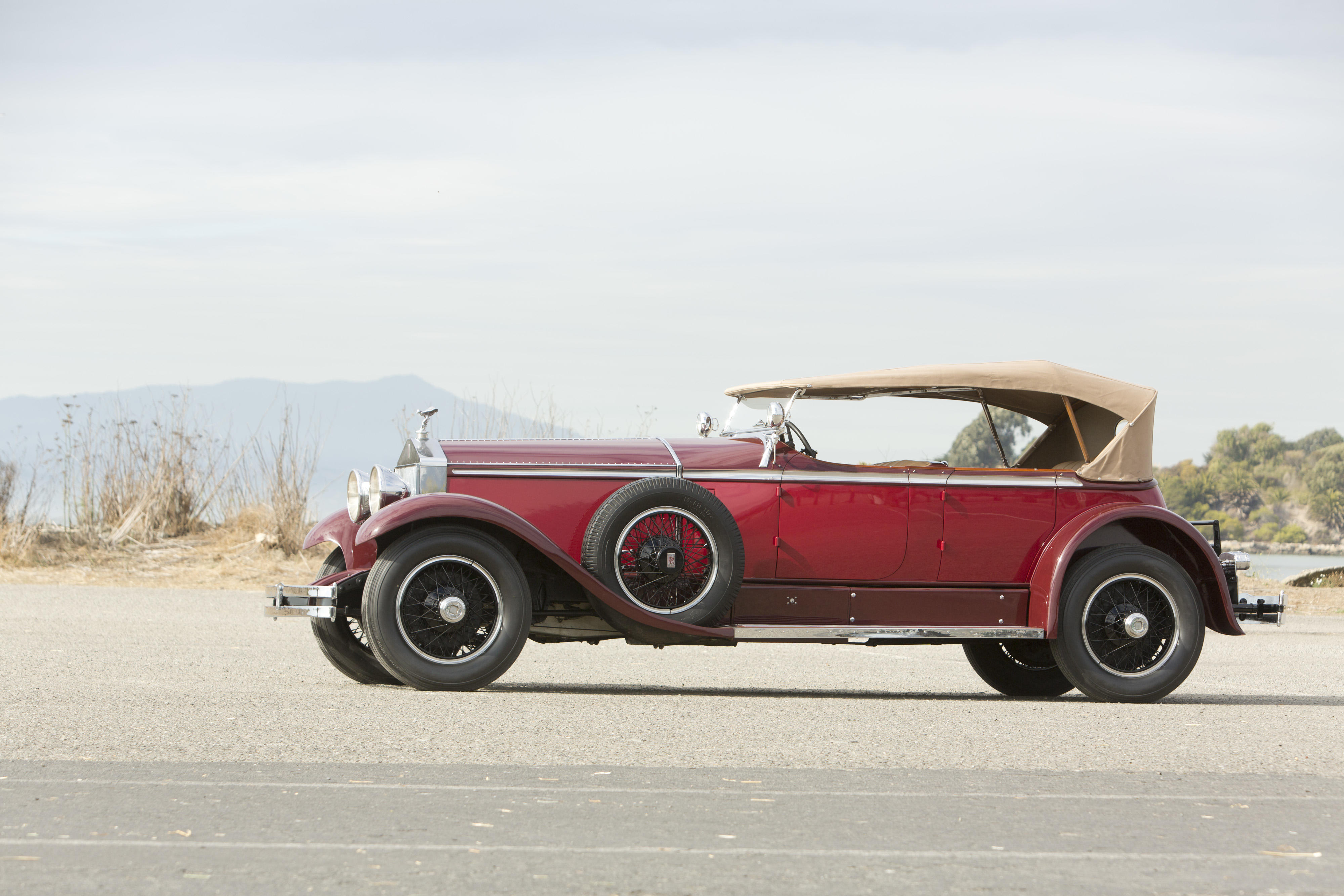


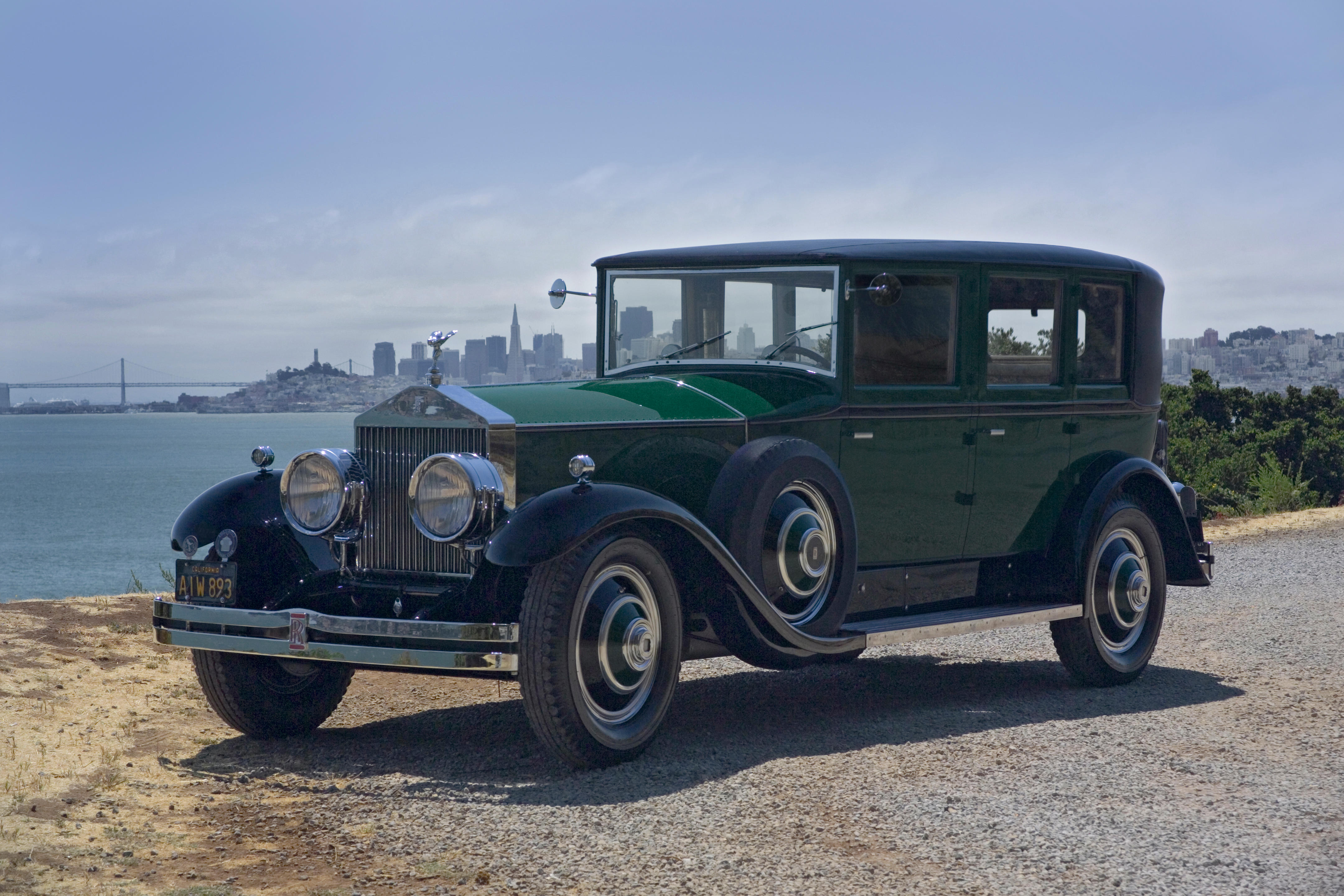
Testen Sie LotSearch und seine Premium-Features 7 Tage - ohne Kosten!
Lassen Sie sich automatisch über neue Objekte in kommenden Auktionen benachrichtigen.
Suchauftrag anlegen